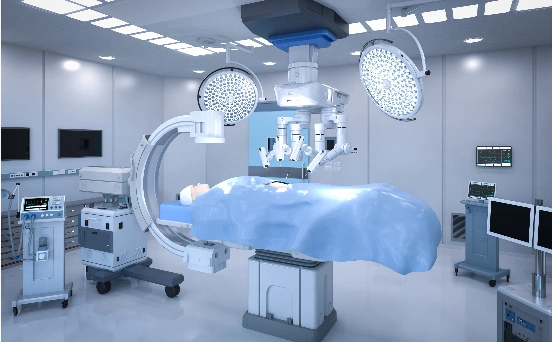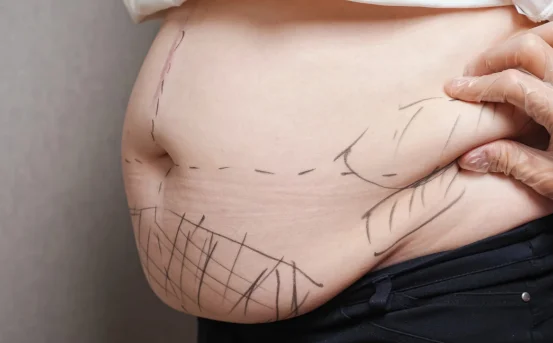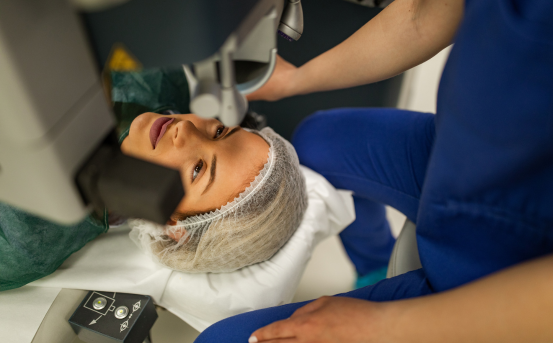Diagnosis for cystodiathermy surgery is a minor gynecological procedure that plays a crucial role in managing certain types of ovarian cysts, particularly in women with polycystic ovary syndrome (PCOS). It is a laparoscopic technique where electrocautery is used to puncture and reduce the size of ovarian cysts. However, before proceeding with this surgical option, a thorough and accurate diagnosis is essential. This ensures that the treatment is suitable and beneficial for the patient.
Cystodiathermy, also known as laparoscopic ovarian drilling (LOD), is a minimally invasive surgical technique used to restore ovulation in women with PCOS, particularly those dealing with persistent anovulation and infertility. This procedure involves using controlled electric current (diathermy) to puncture multiple small cysts on the ovaries, which can help rebalance hormones and stimulate regular ovulatory cycles.
What Is Cystodiathermy Surgery?
Cystodiathermy, also known as ovarian drilling, is a laparoscopic surgical method primarily used to treat polycystic ovaries. The procedure uses electrosurgical tools to puncture multiple cysts on the ovary’s surface. This helps restore regular ovulation and hormone balance, especially in women who have not responded to other PCOS treatments such as medication or lifestyle changes.
It is often considered for women dealing with :-
-
Persistent anovulation (lack of ovulation)
-
Infertility due to PCOS
-
Irregular menstrual cycles
-
Hormonal imbalance unresponsive to other treatments
Why Accurate Diagnosis Is Important Before Cystodiathermy
Before undergoing cystodiathermy, it’s critical to have a precise diagnosis. PCOS symptoms often overlap with other hormonal or reproductive conditions, and unnecessary surgical intervention can be avoided with proper diagnostic testing. Additionally, surgery is typically recommended only after conservative treatment fails.
An accurate diagnosis ensures :-
-
Identification of the root cause of symptoms
-
Appropriate treatment planning
-
Exclusion of other ovarian or endocrine conditions
-
Reduced risk of complications or ineffective treatment
Symptoms That May Indicate the Need for Cystodiathermy
While cystodiathermy is not the first-line treatment, doctors may consider it if the following symptoms persist :-
-
Chronic anovulation despite medication
-
Infertility lasting over 12 months in women with PCOS
-
Irregular or absent menstrual periods
-
Elevated levels of male hormones (androgens)
-
Enlarged ovaries with multiple cysts on ultrasound
-
Resistance to fertility drugs like Clomiphene citrate
If you’re experiencing these symptoms, your gynecologist may suggest undergoing specific diagnostic tests to confirm the suitability of cystodiathermy.
Key Diagnosis for Cystodiathermy Surgery
Several diagnostic procedures help confirm the need for cystodiathermy. These tests help determine whether the patient has PCOS or other conditions that mimic its symptoms, and whether surgery is likely to improve ovulation and fertility outcomes.
Pelvic Ultrasound
A transvaginal or abdominal pelvic ultrasound is usually the first imaging test performed. It provides a detailed view of the ovaries and uterus. In women with PCOS, the ultrasound often reveals :-
-
Enlarged ovaries
-
Multiple small follicles (more than 12 per ovary)
-
Increased ovarian volume
This “string of pearls” appearance on the ovary is a hallmark sign of PCOS and helps confirm the diagnosis.
Hormonal Blood Tests
Hormone imbalances are central to PCOS. A series of blood tests are conducted to evaluate hormone levels, including:
-
Luteinizing hormone (LH) and Follicle-stimulating hormone (FSH) :- Typically, a high LH to FSH ratio is seen in PCOS.
-
Testosterone :- Elevated levels may indicate androgen excess.
-
DHEAS (Dehydroepiandrosterone sulfate) :- To assess adrenal gland function.
-
Prolactin :- High levels may suggest a pituitary gland issue rather than PCOS.
-
Thyroid Function Tests (T3, T4, TSH) :- To rule out thyroid disorders.
-
Anti-Müllerian Hormone (AMH) :- Often elevated in women with PCOS and correlates with follicle count.
These results help differentiate PCOS from other endocrine disorders and determine whether surgery is a viable option.
Glucose Tolerance Test and Insulin Levels
Many women with PCOS experience insulin resistance. A fasting glucose-insulin ratio or an oral glucose tolerance test (OGTT) is used to evaluate insulin sensitivity and the risk of Type 2 diabetes. Managing insulin resistance is often part of PCOS treatment, and poor control may reduce surgical effectiveness.
Ovulation Tracking
Tracking ovulation over a few months can confirm whether a woman is ovulating naturally. This can involve :-
-
Measuring basal body temperature
-
Monitoring luteinizing hormone surges using urine tests
-
Measuring serum progesterone levels during the mid-luteal phase
Women with anovulation despite medication are considered better candidates for cystodiathermy.
Hysterosalpingography (HSG) or Sonohysterography
These imaging tests assess the patency of fallopian tubes and the shape of the uterine cavity. While not directly related to cystodiathermy, they help in a comprehensive infertility workup.
Semen Analysis (For the Partner in Infertility Cases)
In infertility evaluations, male factors must be ruled out before recommending surgery. A semen analysis helps confirm that male infertility is not the cause.
When Is Cystodiathermy Surgery Recommended?
Doctors consider cystodiathermy when :-
-
Hormonal and metabolic evaluations confirm PCOS
-
The woman is not ovulating even after trying medications like Clomiphene citrate, Letrozole, or Metformin
-
The woman wishes to conceive and has been unsuccessful for over a year
-
Other causes of infertility (tubal blockage, male factors) have been ruled out
-
Lifestyle changes and drug therapies have not improved symptoms or hormonal profiles
In some cases, cystodiathermy is also recommended to reduce androgen levels and restore menstrual cycles without focusing on fertility.
Benefits of Cystodiathermy Surgery
Once the diagnosis is confirmed and surgery is indicated, cystodiathermy can offer several benefits :-
-
Improved ovulation in 60–80% of women
-
Reduced serum testosterone levels
-
Restoration of regular menstrual cycles
-
Potential for natural conception without continued fertility medication
-
Less need for long-term hormonal therapy
Risks and Limitations of the Surgery
Like all surgical procedures, cystodiathermy comes with some risks, including :-
-
Adhesion formation (scar tissue)
-
Ovarian damage if over-cauterization occurs
-
Reduced ovarian reserve if too much tissue is destroyed
-
Infection or bleeding from laparoscopic entry
Therefore, careful diagnostic evaluation and expert surgical technique are essential.
Conclusion
Cystodiathermy surgery can be a game-changer for women with PCOS-related infertility and hormonal imbalance, but only when accurately diagnosed and appropriately indicated. Through comprehensive diagnostic steps including pelvic ultrasound, hormonal blood tests, ovulation tracking, and fertility evaluations, doctors can make informed decisions about recommending this procedure.























